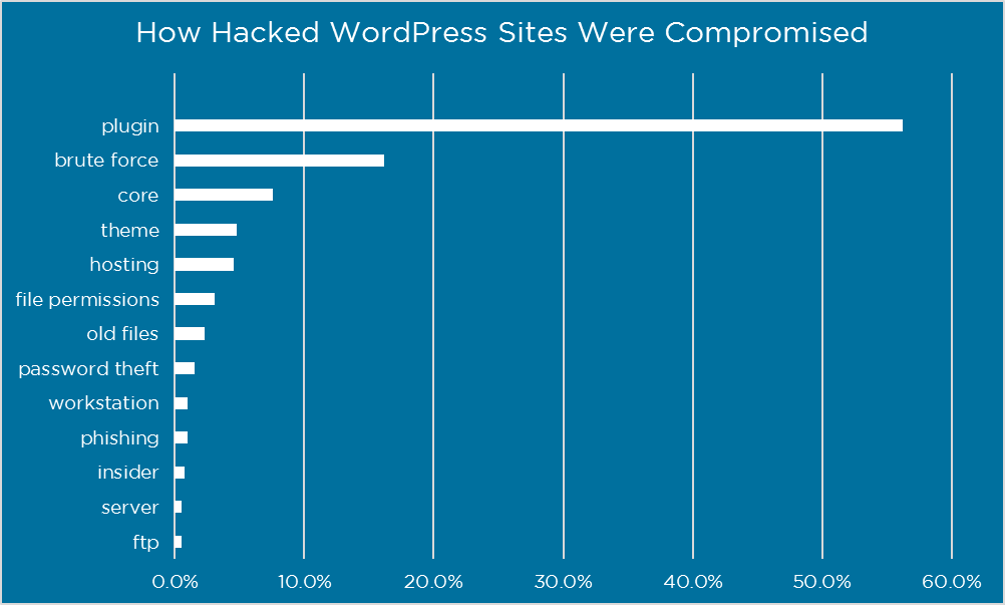 WordPress is an excellent choice for public-facing websites and blogs. In fact, it’s the most popular open source contant management system in the world. People love it because it’s flexible, agile and easy to use. For these exact reasons, WordPress may seem like a logical platform for your company intranet.
WordPress is an excellent choice for public-facing websites and blogs. In fact, it’s the most popular open source contant management system in the world. People love it because it’s flexible, agile and easy to use. For these exact reasons, WordPress may seem like a logical platform for your company intranet.
But how well does WordPress perform as an intranet? What are the challenges and pitfalls? And why do so many businesses move away from WordPress? Find all the answers you need in this post.
1. WordPress is not designed as an intranet software
We’ve had many conversations with customers who use or used WordPress as their company intranet software. The most common challenges they face are caused by this important fact: WordPress in its core functionality is not suitable for creating an intranet.
To meet your business requirements, you will inevitably need to add plugins to your WordPress installation. Fortunately, there are plenty of them – more than 56000 as we speak. Some of them are free, others are not. For instance, you will want to include a plugin for the essential community features, a knowledge base and an internal files repository.
It’s likely that for each function you will need a separate plugin which is supported by a different developer. Sometimes these developers are companies but they are often individuals too, which off course raises questions about continuity.
Dealing with several suppliers has its downsides; they have different support policies, different schedules for updates, some of their plugins might just not work together neatly (updating 1 plugin could break your intranet if it’s not compatible) and some plugins may not integrate well with your WordPress theme.
Do the test yourself and add ‘intranet’ to the search box in the WordPress themes section: https://wordpress.org/themes/search/intranet/ . No themes are found, which is another indication that WordPress might not be the best match if you’re looking for a great intranet design.

Free whitepaper
ADVANTAGES OF A READY-TO-GO INTRANET
Is a ready-to-go intranet your best choice? What are its benefits and downsides? Download our free whitepaper and find out.
2. Permissions and security issues
As wordpress in its core is meant for creating blogs and public-facing websites, the basic settings for permissions and site rules are quite limited. For instance, the media folder in WordPress is accessible for everyone. If someone knows the exact URL of a file, they van access it. Assigning permissions at a page level or setting up rules to restrict access to content is complex and requires more plugins and coding.
Security causes another concern. Because of it’s popularity, WordPress has often been targeted by hackers and spammers. This breakdown from Wordfence shows that plugin vulnerabilities are a huge concern. You will have to take the responsibility to update your software and plugins on a regular basis to reduce the risks.

source: wordfence
3. Buy or build challenge
If you already have a company server and a dedicated IT team, building your own WordPress intranet might look like an attractive option. There are some things to consider though:
- Most WordPress developers don’t have the expertise that’s necessary to set up this kind of advanced configurations, as it’s not basic WordPress functionality. Deploying your WordPress intranet can be time and labor intensive
- You will need your own server or hosting solution
- You will have to take responsibility for the management, security and maintenance of both the intranet and the server
If you don’t have the resources to set up an intranet on your own, a ready-to-go Worpdress intranet may seem like a better choice. These are usually cost-effective and relatively easy to seup and manage. The downside is that their functionality is limited and you’ll rely on the development schedule of the developer if you need more. In this case, WordPress no longer offers the flexibility and agility that made you consider WordPress in the first place.
4. Integrations
Before evaluating intranet solutions, I would suggest you map your existing business applications first. Which tools will no longer be needed after implementing your intranet? Which tools will you need to connect and integrate?
There’s a reason why we built Involv on the SharePoint and Office 365 ecosystem. It allows our users to get the most out of the Office 365 solutions they already use today, like Office 365 Groups, OneDrive, Power BI, Video, Yammer and Delve. Furthermore, users get to use great functionalities like co-working on documents, within their internet browser. WordPress does not offer that kind of integration.
WordPress intranet vs Office 365 intranet
Don’t get me wrong; I do believe some organisations can benefit from a WordPress intranet. If you’re a small organization with a tight budget and you only need some basic functionalities, WordPress might do the trick. But do be aware that many customers we spoke to had outgrown their WordPress intranet because of one of the 4 reasons above.
If you already use Office 365 and want your intranet to grow with you, with a budgettable cost and without the hassle of managing and securing the entire setup yourself, I believe there is a better solution for you. Involv has several advantages over a WordPress intranet; it’s easy to use and manage, integrates with your existing tools, has all the best-practice functionalities built-in and is easy to customize, to name some.
Take a demo of a ready-to-go Office 365 intranet like Involv and see what suits you best.
Any questions? Feel free to contact me anytime.

Tim Bogemans
Try it out today
01.
start your demo
Request your personal demo with our intranet expert and discuss how Involv can help you reach your organizational goals.
02.
enroll
Like what you see? Setup your ready-to-go digital workplace in less than 1 hour, without any technical knowledge.
03.
success
Employees will love what they see, as Involv integrates with all the tools they already know and use. Need more? Contact us!


